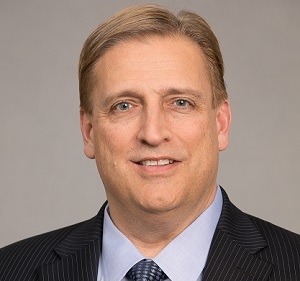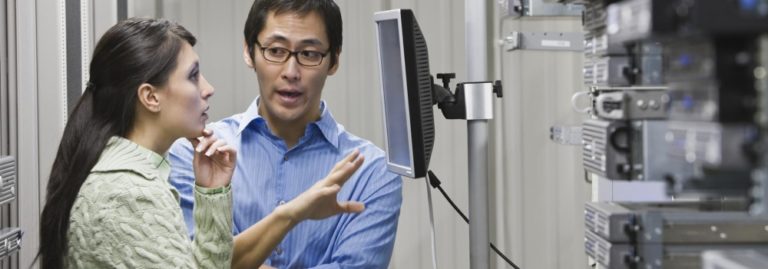By Gregory Pings
“My office is my workplace – four walls and a door.”

Bill Osbourn knows this does not constitute a “modern” workplace. He sees where it’s going: open workspaces, co-working space, glass walls and more.
“The newer companies that focus on services are embracing the ‘modern’ workplace, but I talk a lot and my voice carries,” Osbourn noted wryly. “So my walls are necessary.”
Open floor plans afford more opportunity for collaboration, and Osbourn has observed that it works particularly well with younger workers. “Hoteling” – where employees reserve a temporary office or desk space – is particularly useful when remote workers need the amenities of an office for a few hours or a few days. “It also saves quite a bit of money on real estate,” Osbourn observed.
However, the opaque walls of his office do not mark boundaries for Osbourn; even a chief financial officer logs on after 5 o’clock. “I rarely go more than a few hours without checking email on my iPhone, especially when we’re closing a quarter.”
The cost of commercial real estate, remote access and other modern office matters are not top concerns for the Xerox CFO. What really matters to Osbourn is that management and investors receive accurate information about the company’s finances. He also assures Xerox’s various organizations and business units have solid financial plans.
(The Modern Workplace series is published each Friday on Xerox Connect. Subscribe to this blog so you won’t miss a thing, or retrieve your favorite Modern Workplace articles here.)
Business etiquette and workplace realities
“I have to be able to communicate Xerox’s strategy,” Osbourn pointed out. “I collaborate often with our investor relations and public relations groups, for instance.”
Staying connected to people and teams is vital, and technologies like email, text messages and WebEx are fundamental. His go-to tools are his iPhone and iPad. Working with people is the common denominator, so he leads with his positive demeanor.
“Staying calm in difficult situations goes a long way,” Osbourn said. “An even keel is necessary.”
That’s just the start, where business etiquette is concerned. “Invite only people to meetings who must be there, and don’t worry about finishing the meeting early,” Osbourn advised. “Half hour meetings are ideal. If you schedule any meeting for more than an hour, then you likely don’t know what your goal is.”
(We scheduled an hour for this interview; finished in 20 minutes.)
It’s about time
Osbourn admits none of his rules of the workplace are new, but it leads him to the value of time. Hired at Xerox in December 2016, he said his calendar was loaded with back-to-back meetings throughout the day. “I had to block-out time in order to get things done,” he recalled.
With 14 direct reports, in addition to staying in contact with Xerox CEO Jeff Jacobson and the board of directors, time is Osbourn’s precious commodity. Add to that the necessity to collaborate with groups like Xerox’s North America and international management teams, and you see how quickly the messages stack up and free time disappears.
“I get a great benefit from talking directly to people, either on the phone or face-to-face,” Osbourn said. “That’s another reason why I block-out time on my calendar.”
Juggling time, information and technology
If the page is a thing that holds information, then the smartphone and tablet, in addition to actual paper, are pages. The advantage of an open flow of pages is obvious; humanity advances our knowledge. The disadvantage is also obvious; the premium on our time and concentration.
Set the page free is about more than sharing ideas and facts; the page that is truly set free arrives with relevant information when it’s needed, and in a format that allows you to edit, share, store and decide. Technology has made it impossible for pages to be contained by walls, opaque or otherwise. Conversely, an unfettered stream of information from mobile devices and printers won’t set the page free. The balance happens when technology accounts for the human condition, and people consider when sharing becomes over-sharing.
Until then, Osbourn’s best advice is to disconnect from time to time, even if for just a few hours.
“I enjoy hiking or a Cardinals game,” he said. “But I don’t disconnect as much as I would like.”



